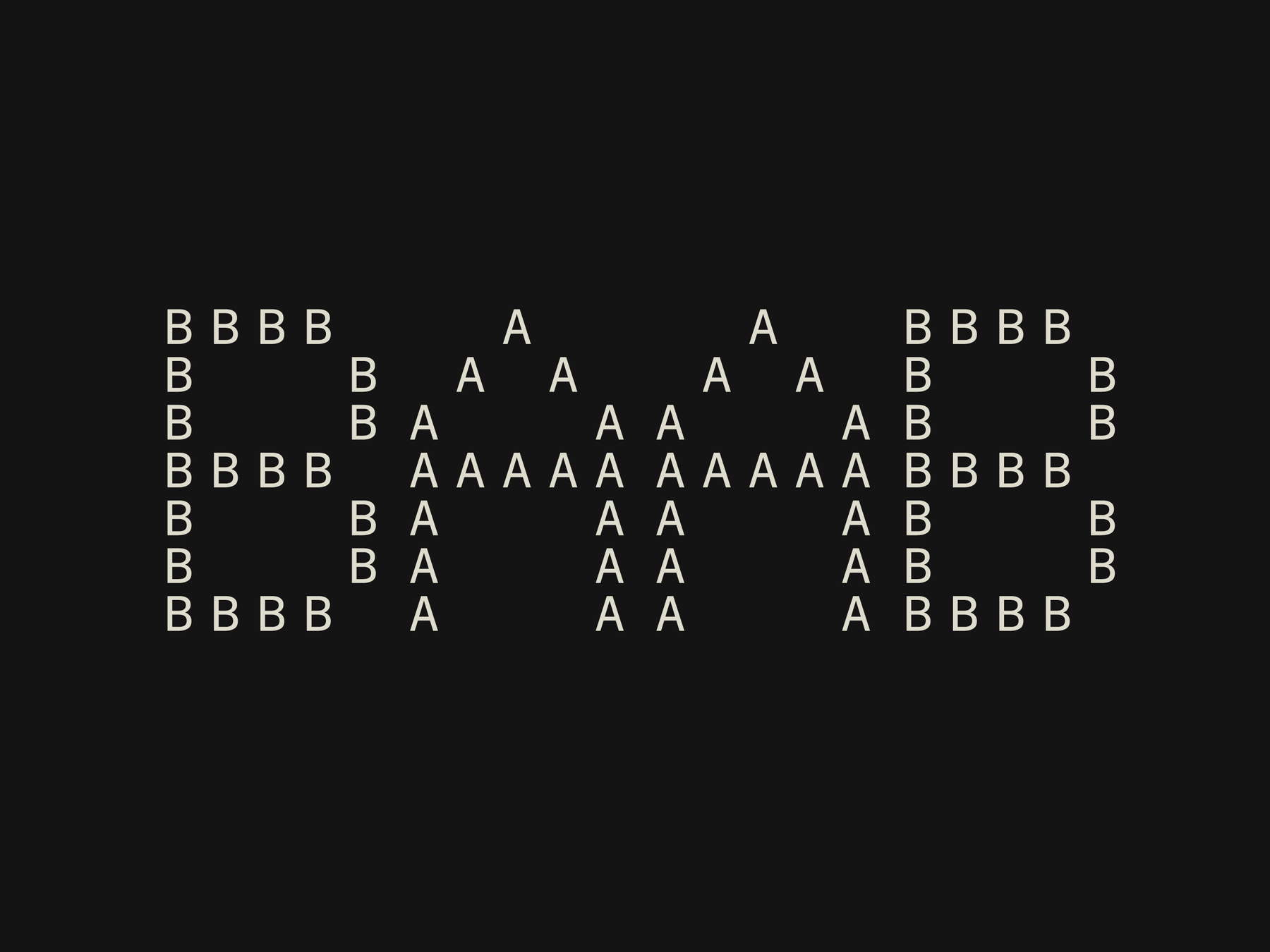A new contemporary art biennial is coming to Rome . It is Basement Art Assembly Biennial (BAAB), with inaugural edition named “BAAB_Issue 00,” which will open in Rome on Sept. 10, 2025, and run through November. The event will take place at Basement Roma, a venue that has been the center for contemporary art founded by CURA. since 2012, a platform engaged in critical, editorial and curatorial practices. The project stems from the intent to propose, within an underground, basement space, and therefore by its nature elusive to a precise definition, a collective assembly, an organism in constant becoming, aimed at composing a shared experience that challenges the classical vision of art exhibitions.
The curators of BAAB, Ilaria Marotta and Andrea Baccin, both founders of CURA., conceived this event in dialogue with an Advisory Board composed of Nicolas Bourriaud, Jean-Max Colard, Simon Denny, Anthony Huberman and Lumi Tan. It is within this framework of confrontation that BAAB takes the form of a “political act,” as Marotta and Baccin state: “a political act that outlines, highlights and reveals. In its broad and layered orchestration, what is brought to light is above all an embryonic, hybrid, metamorphic world, in which roles, times and actions intermingle; it is the zero point where differences and pluralities coexist, where the classical principles of artistic representation are unhinged and the open boundaries of a new space of freedom and coexistence are defined. It is the place of new assemblies. It is a way to imagine alternative futures.”
The conceptual architecture of the biennial inaugurates a model that calls itself a “so-called biennial,” as it explores the very concept of the biennial as an open form, subject to limits, questions and possible transformations. The place, naturally understood, thus becomes an active subject: a mutant organism that evolves over time, enriching itself week after week with interventions, works - often site-specific -, performances, installations, films, actions and new productions intended to enhance the collective character of the event.


This precise dynamics are realized through active participation: the list of artists involved includes international and heterogeneous names from a generational point of view, testifying to the inclusive and trans-disciplinary character of the initiative. This is the list of artists participating in the first edition: Davide Balula (1978), James Bantone (1992), Cecilia Bengolea (1979), Hannah Black (1981), Danielle Brathwaite-Shirley (1995), Vittorio Brodmann (1987), Claudia Comte (1983), Jeremy Deller (1966), Gina Fischli (1989), Gina Folly (1983), Calla Henkel (1988) / Max Pitegoff (1987), Carsten Höller (1961), Karl Holmqvist (1964), David Horvitz (1988), Than Hussein Clark (1981), Mark Leckey (1964), Lily McMenamy (1994), Nyala Moon (1992), Valentin Noujaïm (1991), Puppies Puppies (Jade Guanaro Kuriki-Olivo) (1989), Michele Rizzo (1984), Selma Selman (1991), Tobias Spichtig (1982), Nora Turato (1991), Women’s History Museum (Mattie Barringer, 1990 / Amanda McGowan, 1990).
Organizers announced that more names, guest curators and additional players will be unveiled in September, in conjunction with an interdisciplinary program whose design of readings, conversations, workshops and screenings will involve both the local and international art scene. The collective character of the biennial is also reflected in the sound proposal, curated by Ruggero Pietromarchi, which includes a series of mixtapes commissioned for the occasion, designed to weave a sonic-stratified experience within the exhibition space. In parallel, the performance section is co-curated by Ilaria Mancia, further contributing to the performative and dynamic nature of the event.
Completing the event’s structure, a publication published by CURA. will accompany the event. This special issue - the so-called “Edition 00” or “BAAB newspaper” - will contain curatorial texts signed by the promoters themselves, along with critical contributions by Nicolas Bourriaud, Anthony Huberman, Lumi Tan and Jean-Max Colard, flanked by descriptions of the works curated by Costanza Paissan. Basement Roma, the host organization, bases its identity on experimentation and artistic freedom, acting as an independent platform straddling critical thinking and editorial production. Established in 2012 on the initiative of CURA., it stands as a multidisciplinary and radical space, heir to avant-garde experiences that, since the 1960s, have shaped the Roman artistic vibe.
The entire operation is supported by a plurality of institutional and cultural partnerships, namely the City of Rome, the American Academy in Rome and the Academy of France in Rome - Villa Medici. Main partner is Soho House Rome, while media partners are CURA., e-flux and Zero. The event is also realized thanks to the support of BAAB Founding Members.
Basement Art Assembly Biennial_Issue 00 therefore wants to configure itself as a paradigmatic experiment, a biennial that puts itself before the form of the biennial itself, a living laboratory that develops in time and space, capable of activating new communities, new practices and new ways of understanding art as a place and as a process. The implicit invitation is to change perspective: to look downward-in the basement, in the subterranean-not as a derivative gesture, but as an institutional gesture, because in this new underground an alternative institution, a new form of coexistence and future can be delineated.
 |
| A biennial is born in Rome that aims to launch the format of the... "so-called biennial" |
Warning: the translation into English of the original Italian article was created using automatic tools. We undertake to review all articles, but we do not guarantee the total absence of inaccuracies in the translation due to the program. You can find the original by clicking on the ITA button. If you find any mistake,please contact us.